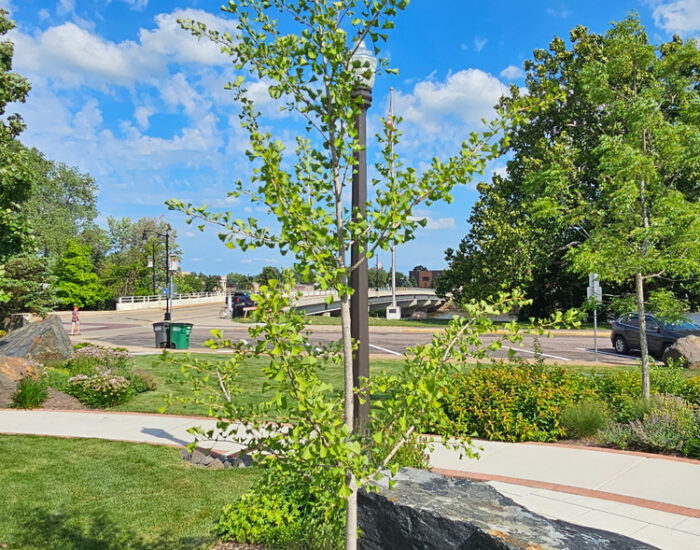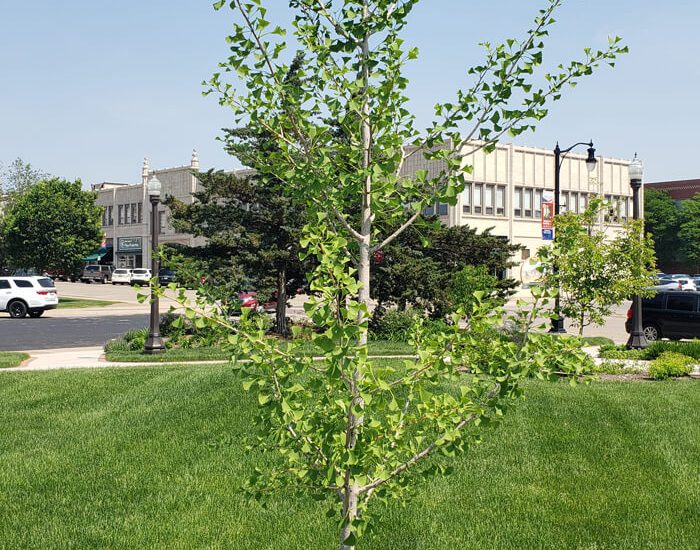Magyar Maidenhair Tree
Ginkgo biloba 'Magyar'
Magyar Ginkgo is an excellent choice for parkways, as a street tree, as well as a lawn/shade tree. One of the best performers in our fields, this hardy tree will provide longevity in your landscape. Tolerant of compact soils, heat, air pollution, and salt it is suitable for a wide variety of sites. With vibrant yellow fall color and a branch structure that creates winter interest, this is a great choice for a shade tree. Plus, it’s a living fossil! May also be known as Maidenhair Tree.
Magyar Ginkgo is a male form of Ginkgo biloba that was first sited growing in front of the Magyar Bank in New Brunswick, New Jersey. Discovered for its narrow and upright form with ascending branches it has become quite a reliable tree.
The genus name Ginkgo is a mistranslation of the Japanese ‘gin’ meaning silver and ‘kyo’ meaning apricot dating back to the 17th century. A long-time symbol of longevity, the Ginkgo’s history is an astonishing one.
Ginkgo trees are known as living fossils, with leaf impressions dating back 270 million years! It is also a readily available medicine throughout the world. A lot of trees claim to be resilient, but how many can say their species has survived an atomic bomb dropped in Hiroshima? Roughly 170 Ginkgo biloba survived the blast in 1945. Talk about a living legend! A true symbol of longevity, this tree will most likely outlive generations to come. A single Ginkgo tree can live for over 1,000 years. Autumn Gold Ginkgo, can be expected to do the same.
In the fall, you may notice your Ginkgo’s leaves drop dramatically, all at once. Why is this? As colder weather comes, common deciduous trees like maples often lose their leaves over a few weeks. The process of a tree losing its leaves is a little more complex than you may think, the stems of leaves on these trees are called petioles. Petioles produce a layer of protective cells to protect trees from diseases that could enter as the leaves drop. This process typically takes place over several weeks as temperature decreases. On a Ginkgo tree, the petioles form a layer of scar-like cells simultaneously and once a hard frost arrives it triggers all leaves to drop at once, creating a lovely golden carpet around the base of your tree. A true sign that fall has arrived.
Ginkgo biloba was previously classified in the Pinophyta division (phylum), which encompasses all cone-bearing plants commonly referred to as conifers. Ginkgo biloba is now classified in its own division, Ginkgophyta, but it is still a gymnosperm (meaning ‘naked seed’) and is closely related to other prehistoric plants like evergreens and cycads.
Complete information on this species can be found at the source link below:
Information Source: https://kb.jniplants.com/magyar-ginkgo-biloba
Plant Source: Johnson’s Nursery
Core Characteristics
Type: Shade
Origin: China
Mature Height: 40-50 Feet
Mature Spread: 20-25 Feet

